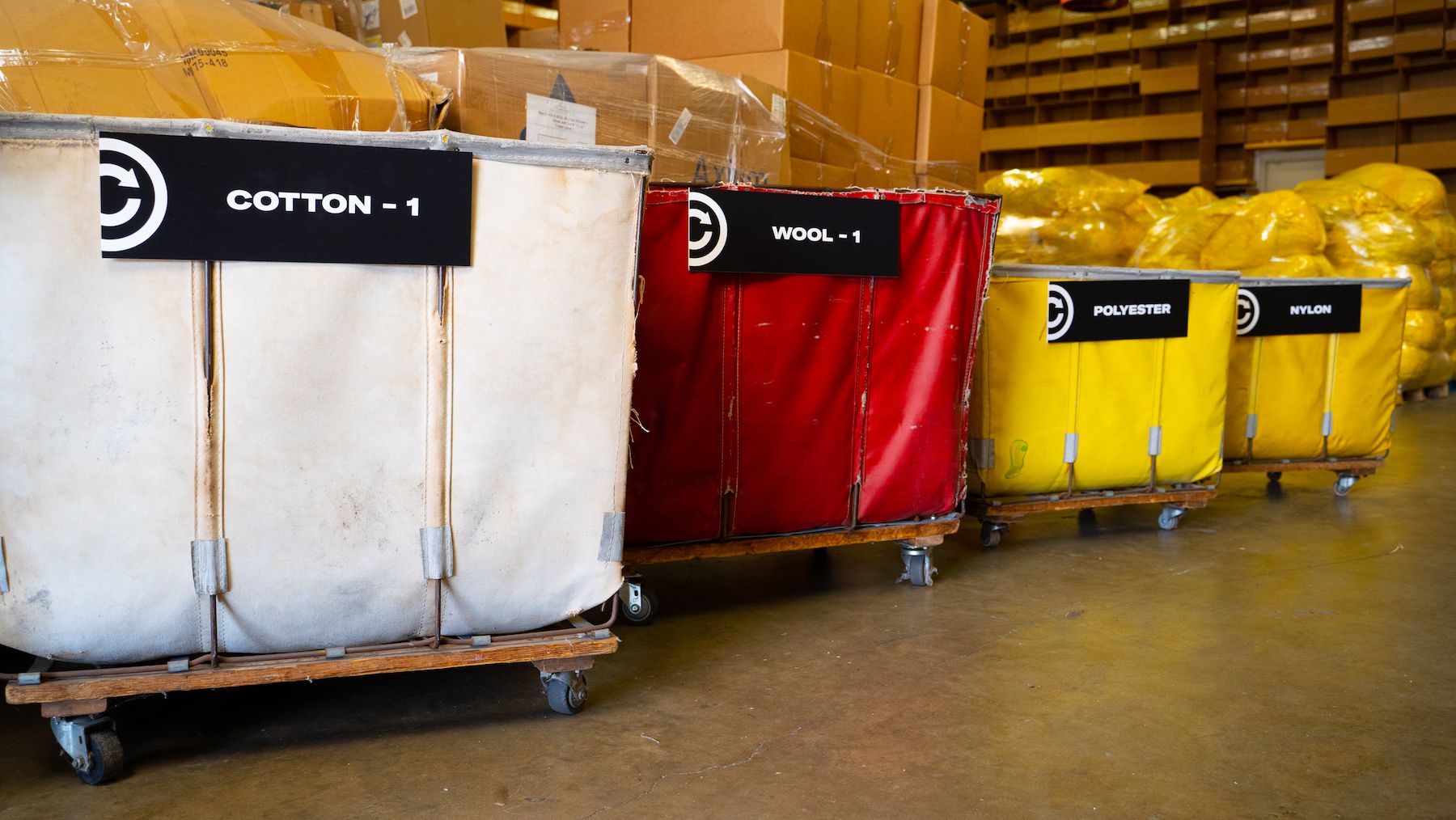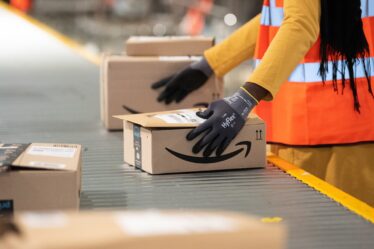
When Chloe Songer and Stuart Ahlum launched the footwear brand Thousand Fell shortly before the pandemic, they wanted to prove that it was possible to recycle their shoes again and again — and turn a profit, too.
Their vision was, if not quite mainstream, at the heart of environmental activists’ case for circular fashion — the idea that the industry could reorient itself around products that are made, purchased, recycled, remade and resold while consuming as few new resources as possible.
It was even harder than they had thought.
“Turning old sneakers back into new sneakers is expensive; it is not profitable and it is not scalable,” said Songer.
The issue wasn’t with how their shoes were designed, or with consumers who couldn’t be bothered to send back worn pairs (that was solved by a $20 “recycling deposit” customers got back when they returned their sneakers).
The trickiest problem was much more mundane: shipping. Recyclers and sneaker manufacturers are set up to whisk materials around the world in bulk. Thousand Fell’s approach was vastly more expensive, costing as much as $13 just to get one pair of sneakers from a customer’s home to a recycler. A bespoke recycling programme to process each pair as it trickled in cost upwards of $7 for each set of shoes.
As Ahlum and Songer set about tackling these issues, Thousand Fell became a testing ground for a more ambitious goal. While the brand continues to operate — and has been profitable for the last nine months — it is now part of a larger venture, called SuperCircle, aimed at solving the challenge of getting old clothes from consumers’ wardrobes into the recycling system.
Fashion’s Holy-Grail Sustainability Solution
The business is a bet on a broader shift towards a more circular fashion system.
Brands have embraced the concept because it affords them a holy-grail solution that side-steps, at least partially, the suggestion that the industry should simply slow down and produce less in order to reduce its environmental impact. Regulators in Europe have made circularity the lynchpin of their strategy for the industry, while consumers, bombarded with images of old jeans, ragged T-shirts and tatty sneakers piled in landfills, are casting about for responsible ways to dispose of old clothes.
This is the not-very-sexy, not-very-public-facing gap in the circularity landscape.
Companies including H&M Group, Zara-owner Inditex and Ralph Lauren have invested in textile recycling solutions that are beginning to scale. By the end of the decade, nearly 30 percent of Europe’s post-consumer textile waste could be transformed into valuable raw materials, up from less than one percent today, according to a report published last month by consultancy McKinsey & Co.
But comparatively little attention has been paid to the logistics challenge SuperCircle aims to address. This gap is “the most significant challenge” to scaling emerging recycling solutions, the McKinsey report found.
Right now, only a fraction of old clothes are even collected — most go in the trash and are simply burned or sent to landfill. The bulk of what makes it back into the system through brand-backed take-back schemes or charitable donations is exported to places like Chile and Ghana for resale. Much of it is of such poor quality it simply ends up in landfill at its final destination.
Clothes that aren’t marked for resale still need to be carefully sorted to meet the requirements of recycling systems, which can often only process a specific type or mix of fibres. Right now, sorting out which cast-off clothes should go where is a largely manual, costly process, followed by more work to strip off things like zippers and buttons. And recyclers want bulk volumes, which means brands can’t send clothes or shoes back one by one.
“This is the not-very-sexy, not-very-public-facing gap in the circularity landscape,” said Kathleen Talbot, chief sustainability officer at Reformation, SuperCircle’s first brand partner. “How do you actually get this stuff back, and how do you aggregate and deal with the logistics and connect post-consumer returns to these recycling partners?”
SuperCircle’s proposition is to digitise this process as much as possible. Its tech and logistics platform supports brands’ consumer-facing clothing take-back schemes and plugs into their returns process to whisk inventory that can’t be resold to recycling partners. Brands get transparency over where their old clothes end up and data on associated environmental savings.
The company raised $4.2 million in a seed round earlier this year from investors including Wireframe Ventures and Capital One. The platform went live in May and is on track to have upwards of 10 brand partners on board by the end of the year. Next year, its goal is to add at least 30 more.
Fashion’s New Last Mile
The logistical problem is similar in complexity to the “last mile” challenge of shipping online orders from warehouses to individual consumers’ doorsteps. Getting old clothes from closets to recyclers means reverse engineering that process with added layers of data analysis, sorting and processing.
SuperCircle is piggybacking off a decade of innovations focused on making this element of delivery and returns more efficient.
For consumers, the company’s take-back service feels a lot like processing an online return. To recycle a pair of old Reformation jeans, for instance, shoppers register through the brand’s website, where they can choose a range of options that also include resale and repair. Would-be recyclers select the type of garment they want to return (for now, Reformation’s service is limited to the brand’s denim, sweaters, shoes and activewear, garments capable of being processed back into new material) and when it was purchased. They then receive a printable shipping label or QR code, which can be used to return the items in-store or at one of 14,000 take-back locations across the US. As a bonus, users can earn up to $25 in in-store credit for sending back their used clothes.
The logistical problem is similar in complexity to the “last mile” challenge.
If the original purchase was made online, SuperCircle syncs up with users’ order history to get more detail on each product. The goal is to scrape data on each item’s material composition to reduce the need for manual sorting. For returns that aren’t identifiable or bulk returns that aren’t linked to a specific brand, SuperCircle is looking at emerging infrared sorting technologies to help ease this pain point. Each shipment is digitally tagged to make it easier to direct it to the correct destination and give brands traceability.
The company has 12 different recycling partners in the US and a handful in Europe and Latin America. It ships bales of waste aggregated from clients roughly once a month or once a quarter, depending on volumes.
That has enabled real savings: most logistics providers are set up to get products to customers as fast as possible, and even returns are geared for speed so unwanted products have a chance to get back on shelves before the end of their sales cycle. Clothes destined for recycling don’t face that kind of time pressure, opening up opportunities to slow down, optimise and consolidate shipments to slash the price.
“On fulfilment, everyone wants two-day deliveries,” said Ahlum. “We’ve reverse-engineered that so speed isn’t the factor, it’s cost and environment.”
Building a Business Model
SuperCircle is leaning into a white space that exists because textile-to-textile recycling solutions are only just beginning to scale. Until now, there’s been little incentive for companies to try and work out the gnarly logistics involved. Efforts to tackle that are playing against existing markets for secondhand exports and downcycling.
“It’s a hard conversation when you’re trying to pitch [a brand] to spend $50,000 to recycle inventory with us, or burn [it and get a tax write-off] or sell it at 80 cents per unit,” said Songer.
Regulation and incentives to encourage recycling could help. So could a crackdown on greenwashing that’s upping the pressure on brands to really back up sustainability claims. Recycling programmes and circularity claims are in particular focus because so little clothing is actually recycled.
“There’s a little bit of that black box,” Reformation’s Talbot said. “A lot of us are very sensitive to the fact that a lot of this stuff does get exported.”
In addition to its logistics offering, SuperCircle aims to give brands visibility into what’s happening to their products at the end of their life and the associated environmental impact.
“This is going to be the next frontier of assurances and reporting on ‘Where does this stuff actually go?’” said Reformation’s Talbot. “It’s not just relevant, but really critical for brands to take seriously.”
For more BoF sustainability coverage, sign up now for our new Weekly Sustainability Briefing by Sarah Kent.



